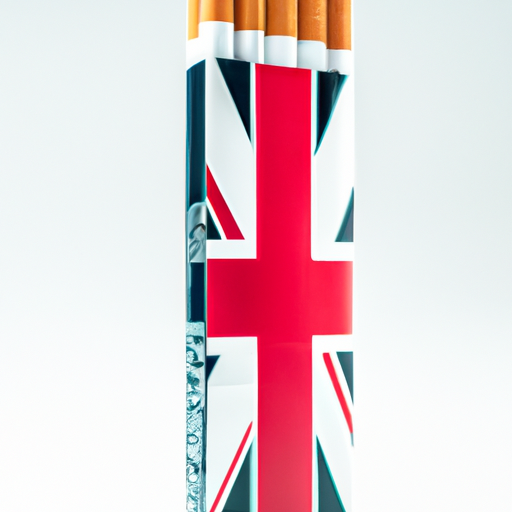
As a resident of the United Kingdom, I have witnessed first-hand the impact of cigarettes on our society. From the early advertisements glamorizing smoking to the current restrictions and regulations, cigarettes have been a controversial topic in the UK for centuries. In this article, I will delve into the history, laws, and effects of cigarettes and their role in the British culture.
The History of Cigarettes in the UK
Cigarettes have a long and colorful history in the United Kingdom. It is believed that the first instances of smoking in the UK date back to the 16th century, with the introduction of tobacco to Europe by Christopher Columbus. However, it wasn’t until the 19th century that cigarettes gained popularity in the UK. At this time, cigarettes were perceived as a symbol of sophistication and were mainly smoked by the upper class.
During the two World Wars, cigarettes played a vital role in boosting the morale of soldiers. It was also during this time that cigarettes became more affordable and accessible to the general public. This rise in popularity was fueled by clever marketing campaigns and the iconic images of celebrities such as James Dean and Audrey Hepburn smoking cigarettes in films.
Despite the initial glamour and allure of cigarettes, their negative health effects were beginning to emerge in the 20th century. In 1965, the first Surgeon General’s Report on Smoking and Health was released, which highlighted the link between smoking and lung cancer. This report sparked a chain of events that would eventually lead to stricter regulations and laws surrounding cigarettes.
Smoking Laws and Regulations in the UK
The government of the United Kingdom has taken significant steps in regulating tobacco products, with the primary aim of reducing the harm caused by smoking. Today, the UK has some of the most stringent tobacco laws in the world.
In 2007, smoking in enclosed public spaces was banned in England, Wales, Scotland, and Northern Ireland. This law not only protects non-smokers from the harmful effects of secondhand smoke but also encourages smokers to quit. As a result, many public places such as restaurants, bars, and public transportation have become smoke-free environments.
In addition to the smoking ban, the UK government has also implemented various measures to discourage smoking. These include increasing the legal age to purchase cigarettes from 16 to 18, prohibiting tobacco advertising, and mandating graphic health warnings on cigarette packs.
Furthermore, the introduction of plain packaging in 2016 has had a significant impact on the appearance of cigarette packs. This measure requires that all tobacco products be sold in unbranded, standardized dark green packs with graphic images and health warnings. This has been a controversial move, with tobacco companies arguing that it will lead to an increase in counterfeit products and have little effect on reducing smoking rates.
The Effects of Smoking on the Population
Despite the efforts of the government to reduce smoking rates, cigarettes remain a prevalent and deadly habit in the UK. According to the Office for National Statistics, in 2020, 14.9% of people aged 18 and over in the UK were smokers. This figure has been on the decline in recent years, with a 5% decrease since 2011.
Smoking has numerous negative impacts on both the individual and society as a whole. It is estimated that smoking-related illnesses cost the National Health Service (NHS) over £2.5 billion annually. Apart from the financial burden, the health effects of smoking are severe and can be life-threatening. Cigarette smoke contains thousands of toxic chemicals, including nicotine, tar, and carbon monoxide, which can lead to a range of health issues, including lung cancer, heart disease, and respiratory problems.
In addition to the health impact, cigarettes also have a detrimental effect on the environment. Tobacco cultivation, production, and disposal of cigarette butts all contribute to pollution and damage to the environment. Furthermore, discarded cigarette butts can contain harmful chemicals, which can contaminate soil and water sources.
The Role of Cigarettes in British Culture
Despite the health risks and strict regulations, cigarettes still hold a place in British culture. Many people see smoking as a form of relaxation or a way to cope with stress. This is further perpetuated by the portrayal of smoking in popular culture, such as in films and advertisements.
In the UK, smoking is also a social activity, with friends and colleagues bonding over a cigarette break. However, this social aspect has also been impacted by the smoking ban, with smokers now often segregated from non-smokers during social gatherings.
Another aspect of British culture often associated with smoking is the infamous pub culture. The pub has long been a symbol of British society, and for many, having a cigarette with a pint of beer is seen as an essential part of this experience. As a result, many pubs now have designated smoking areas outside the premises, with heaters and shelter to accommodate smokers.
However, with the rise of vaping and other alternatives to traditional cigarettes, there may be a shift in this cultural dependency on smoking. Vaping, in particular, has gained popularity in recent years and is seen by many as a safer alternative to smoking. Along with other smoking cessation aids such as nicotine patches and gum, these alternatives provide hope for reducing smoking rates in the UK.
In conclusion, cigarettes have played a significant role in the culture and history of the United Kingdom. From their initial glamorization to the current strict regulations, cigarettes have been a contentious topic in the UK. While smoking rates may be declining, the impact of cigarettes on health, the environment, and British society remains a concern. As a country, we must continue to educate and discourage smoking while providing support for those who wish to quit. Only then can we truly make cigarettes a thing of the past in the United Kingdom.